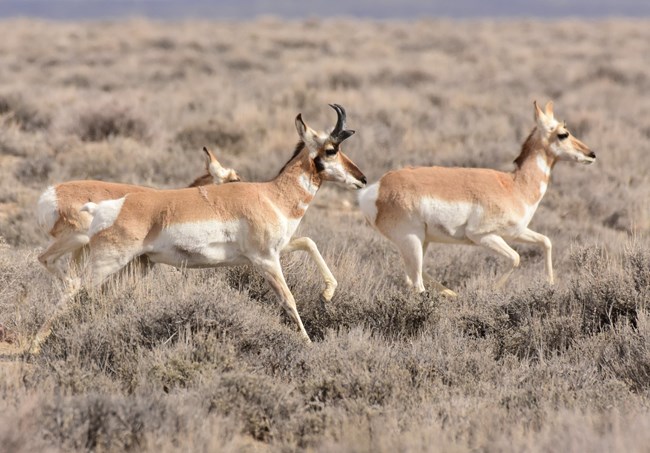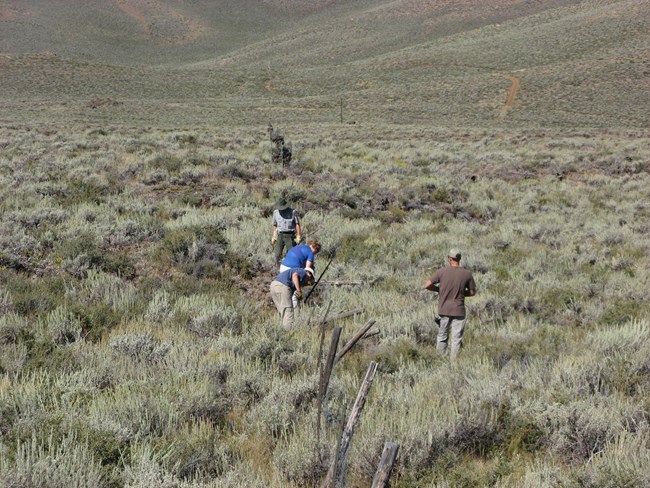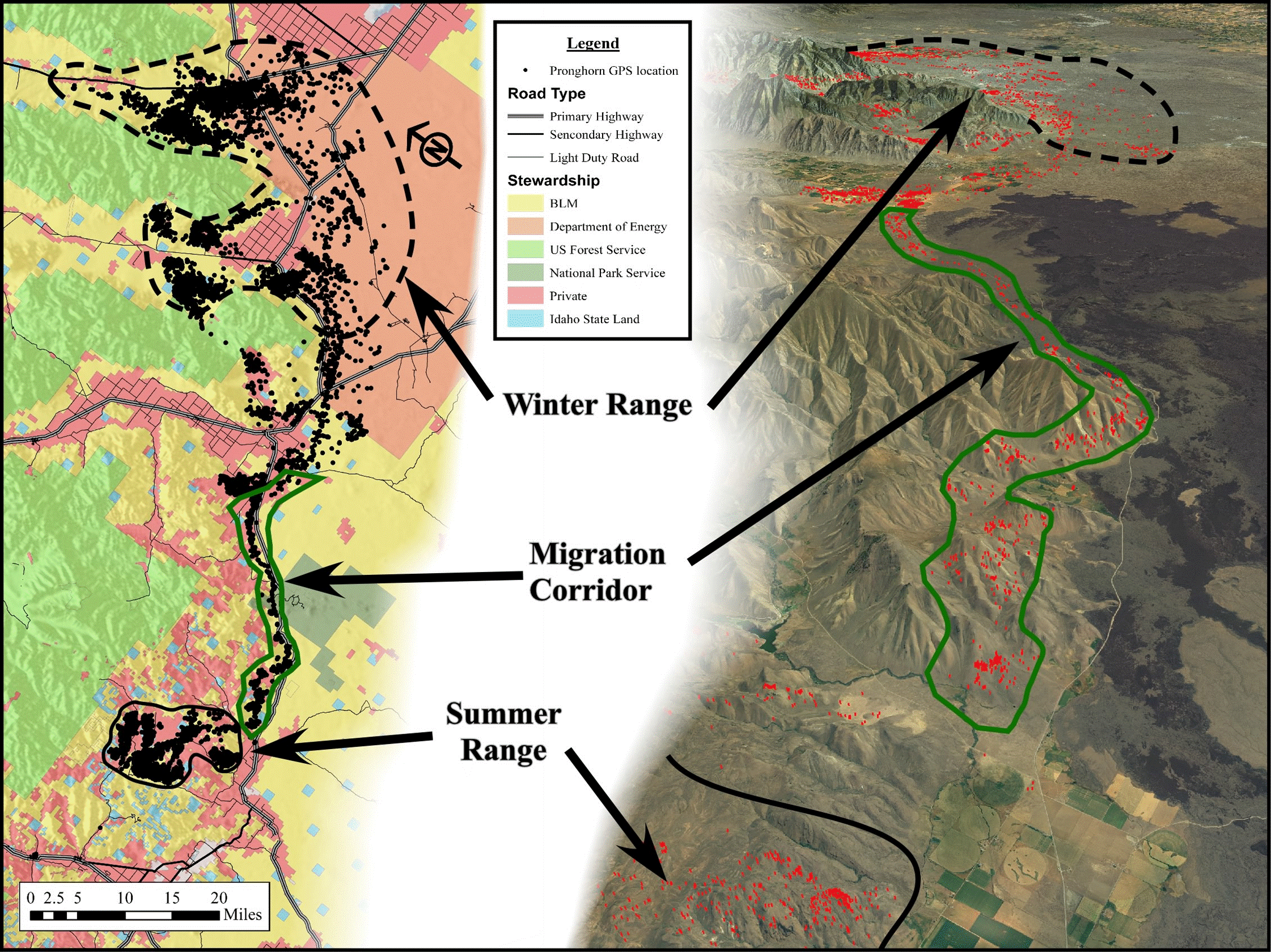
USFWS Photo / Tom Koerner Antilocapra americanaDescription
Where to See ThemPronghorns can be found across much of the Snake River Plain and open slopes of mountains surrounding Craters of the Moon. Small numbers are occasionally seen within the lava fields, but they are most reliably observed during spring and fall migration between their winter to summer ranges. BehaviorPronghorns prefer open country where their status as the fastest land animal in North America gives them a distinct advantage over most potential predators. Only young fawns are really vulnerable to predators, and then only for the first few weeks after birth. 
NPS Photo Migration & ConservationThis migration extends over one hundred miles each way from the Pioneer Mountains to the Birch Creek area of the Upper Snake River Plain. The migration route parallels Highway 20/26/93 for most of the stretch between the towns of Carey and Arco. It passes through a narrow corridor in places only a few hundred yards wide between the Craters of the Moon lava fields and the foothills of the Pioneer Mountains. Many more modern obstacles have appeared within the migration corridor over the past century. Fences and highways both present real challenges and dangers to pronghorn attempting to cross them. For all their athletic speed, pronghorns do not like to jump. When encountering a barbed wire fence they attempt to crawl underneath rather than going over. Some fences with wire too close to the ground prevent this option and pronghorns must search for a way around. Fences along highways present particular danger to pronghorns attempting to cross roads along the migration corridor. They are often either struck by vehicles or run head long into barb wire when panicked by oncoming traffic. The National Park Service, along with many other public land agencies and private land owners, are working to reduce fencing hazards by either removing fencing all together or modifying existing fencing to facilitate pronghorn passage. You can help by driving carefully in areas marked as wildlife crossings to reduce wildlife collisions. Slowing down in these zones greatly reduces the risk to wildlife and to you. Much of what is known about the pronghorn migration corridor across Craters of the Moon has only been learned in recent years. Development of new technologies has allowed continuous tracking of pronghorn for a full year. GPS devices with a radio transmitter have been attached to captured pronghorns. After a year the devices are programmed to fall off and can then be located using the radio transmitters. The recorded locations from the GPS device are downloaded to reveal an almost hour-by-hour record of their movements. A number of organizations led by the Lava Lake Institute for Science and Conservation and the Wildlife Conservation Society made this study possible. 
|
Last updated: March 31, 2023
